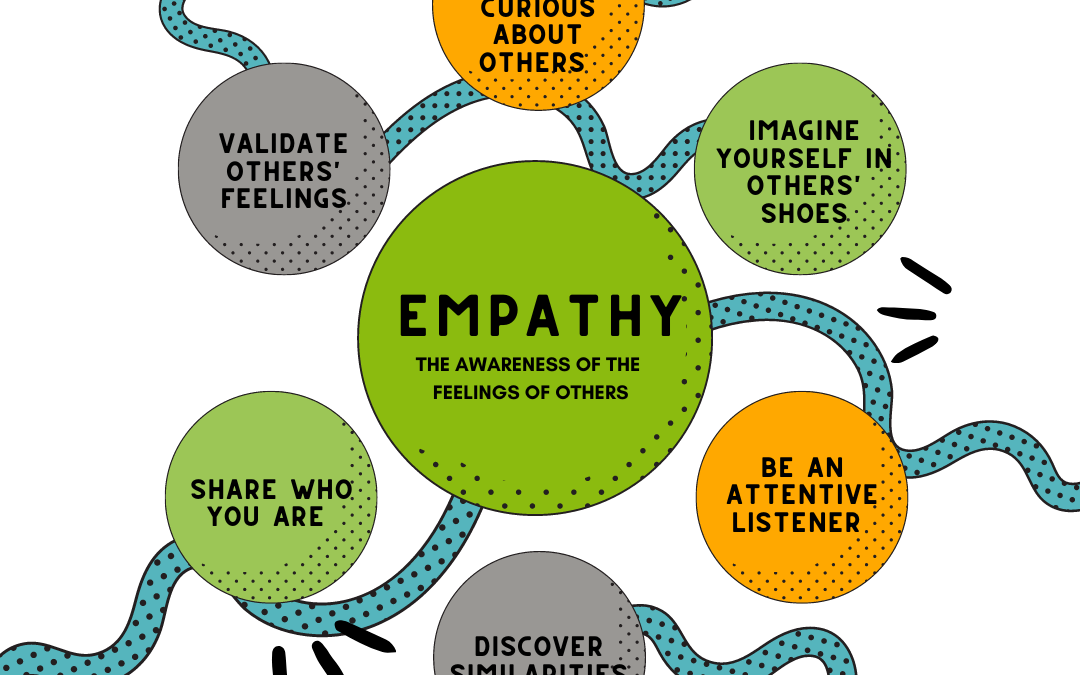Dear Cottonwood Families,
Happy Wednesday to you all! We’re halfway through our special Week of Awareness: Celebrating Neurodiversity, and I hope you’ve found the daily newsletters and activities insightful and enriching for you and your children. It’s a week that means a lot to many of us, as we recognize and celebrate the beautiful tapestry of minds and abilities in our community. Yet, as we focus on understanding neurodiversity, we’re also engaging in something much broader: the exercise of empathy.
Empathy, the ability to understand and share the feelings of another, is more than just a buzzword or an item to check off on a list of character traits. It’s a skill that needs as much training and nurturing as math or reading. In many ways, empathy is the foundation for a host of other essential skills: kindness, collaboration, and communication, just to name a few. And as homeschooling parents, we have a unique opportunity (and, dare I say, responsibility) to teach this skill in a more nuanced and individualized manner.
So how can we guide our children to develop this crucial trait?
Modeling Empathy
First and foremost, our children learn empathy from us. When they see us approach a confused neighbor with kindness rather than impatience, or hear us speak respectfully about someone who holds different views, they absorb these lessons deeply. Take a moment to examine your actions and words, both when you’re directly interacting with your child and when you think they’re not paying attention.
Empathy in Storytime
Whether you’re reading picture books to your younger ones or discussing novels with your teenagers, literature provides fertile ground for discussing feelings and perspectives. Ask questions like, “How do you think this character felt?” or “What would you do in that situation?” to encourage your child to put themselves in someone else’s shoes.
Emotional Vocabulary
Understanding empathy starts with the ability to name and recognize a broad spectrum of emotions, both in ourselves and others. While we often limit our emotional descriptors to basic terms like ‘happy,’ ‘sad,’ or ‘angry,’ the human emotional experience is far more complex. Introduce your children to a more nuanced emotional vocabulary with terms like ‘compassionate,’ ‘indifferent,’ ‘conflicted,’ or ‘enthusiastic.’ This enriched language gives them the tools to better understand their own feelings as well as those of others, which is foundational to developing empathy.
One method that I’ve found particularly effective for nurturing empathy in my children, even as they navigate the emotionally complex teen and tween years, is the use of visual aids. In the resource section below, you’ll find a printable “Empathy Wheel.” This visual tool serves not just to identify emotions but also to help children understand the emotional states that others might be experiencing. As your child’s understanding deepens, you’ll find expanded versions of the Empathy Wheel that incorporate even more complex emotions and empathic responses.
Enhancing emotional vocabulary is not merely an academic exercise; it’s a life skill that paves the way for greater emotional intelligence and empathy. It equips children to navigate interpersonal relationships more effectively and fosters a more compassionate understanding of the diverse emotional landscapes that make up our human experience.
As we dive into the latter half of our Week of Awareness, let’s keep empathy at the forefront of our minds and hearts. After all, the most important lessons we can offer don’t always come from textbooks but from the simple, everyday opportunities to connect deeply with one another.
Wishing you a week filled with awareness, understanding, and above all, empathy.
Kindly,
Kara
13 Books That Model Empathy and Compassion for Young Readers
An Educator’s Guide To Building Empathy With Books
11 Touching Books to Boost Empathy in Teen Readers
Brené Brown on Empathy (Kid friendly, but geared towards older students and adults)
Emotion Wheel for Building Emotional Vocabulary

